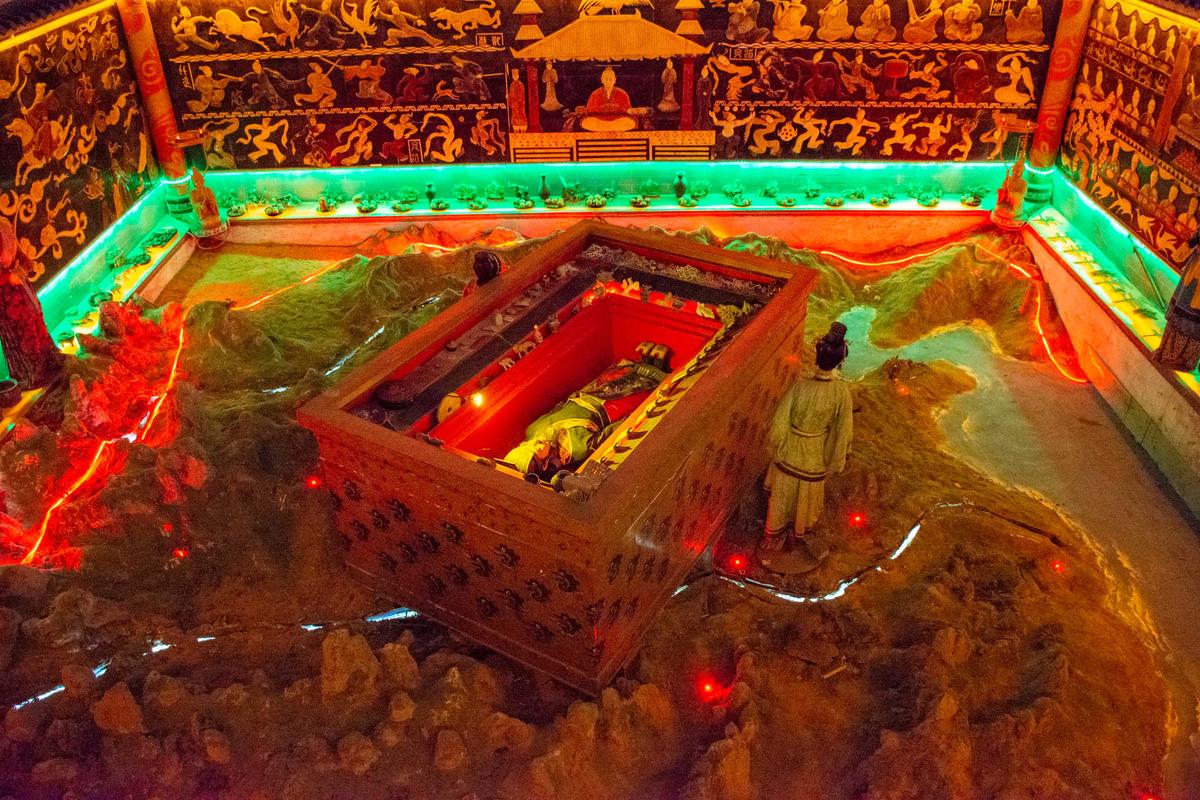
What Has Been Found Inside The Mausoleum Of The First Qin Emperor?
Introduction
The Mausoleum of the First Qin Emperor (Qin Shi Huang) is one of the most impressive and enigmatic archaeological sites in the world. Located near Xi'an, China, the mausoleum complex sprawls over a vast area and holds the tomb of the emperor who united China in 221 BC. While the central tomb remains unexcavated, the surrounding pits have yielded a wealth of information about the Qin dynasty and the emperor's belief in an elaborate afterlife.
The Terracotta Army and Other Pits
The most famous discovery is undoubtedly the Terracotta Army, located in three pits east of the tomb mound. Thousands of life-size terracotta soldiers, each with unique facial features, armor, and weaponry, stand in battle formation, guarding their emperor for eternity.
Beyond the Terracotta Army, numerous other pits have been discovered, each offering a glimpse into different aspects of the emperor's court and the afterlife he envisioned.
Human Remains - A Possible Family Tragedy
In some pits, archaeologists have uncovered the remains of seven individuals. Forensic analysis suggests these were likely young people, possibly the emperor's own children. The circumstances surrounding their deaths remain shrouded in mystery, leading to speculation about court intrigue and the brutal nature of succession struggles in ancient China. The discovery paints a somber picture of the potential human cost of absolute power.
A Subterranean Stable - Horses for the Afterlife
One remarkable find is a subterranean stable filled with the skeletal remains of horses. These animals, carefully arranged, were likely sacrificed to accompany the emperor on his journey to the afterlife. The sheer number of horses speaks volumes about the importance placed on equestrian power and the emperor's desire for a grand procession even in death.
Bronze Chariots - Symbols of Power and Mobility
Further emphasizing the importance of horses and chariots, archaeologists have unearthed an assemblage of half-size bronze chariots. Exquisitely crafted with intricate details, these chariots were likely ceremonial objects intended to transport the emperor's soul through the afterlife. Their presence further highlights the Qin Dynasty's mastery of bronze casting and the symbolic significance of chariots in their culture.
Individual Burial Sites - A Glimpse into Courtly Life
The discovery of 70 individual burial sites surrounding the main tomb mound offers a unique insight into the lives of those who served the emperor. These individuals, likely courtiers, officials, or concubines, were buried with varying degrees of wealth and status reflected in the accompanying grave goods. These findings provide valuable clues about court hierarchy, social customs, and the material culture of the Qin Dynasty.
Exotic Animals - A Showcase of Power and Reach
Evidence suggests the presence of a "zoo" within the mausoleum complex, containing the remains of exotic animals. These animals, potentially brought from far-flung corners of the empire, were not native to the region and served as potent symbols of the emperor's power and the vastness of his domain. This collection of exotic creatures underscores the Qin Dynasty's ambition to project an image of imperial might and dominion.
Conclusion: A Legacy Unveiled
The discoveries made in and around the Mausoleum of the First Qin Emperor offer an unprecedented glimpse into the life, death, and afterlife beliefs of one of China's most powerful rulers. While the central tomb remains unopened, the surrounding pits have yielded a treasure trove of artifacts, human remains, and animal bones, painting a vivid picture of the emperor's court, the opulence of his reign, and the sacrifices made in the name of his legacy.
Q&A
- Q: Why hasn't the central tomb of Qin Shi Huang been excavated?
A: The main tomb remains unopened out of respect for the emperor and due to concerns about the potential damage that excavation could cause. Technological limitations and the presence of potentially dangerous booby traps, mentioned in historical texts, also contribute to the decision to delay excavation.
- Q: What can we learn from the artifacts found in the mausoleum complex?
A: The artifacts provide invaluable insights into the Qin Dynasty's military technology, artistry, social structure, religious beliefs, and the emperor's quest for immortality. They offer a tangible link to the past, enriching our understanding of this pivotal period in Chinese history.
- Q: What is the significance of the Terracotta Army?
A: The Terracotta Army is not just a collection of statues; it represents the military might and ambition of the Qin Dynasty. It reflects the emperor's desire to conquer death and rule for eternity, showcasing the grandeur and innovation of ancient Chinese civilization.